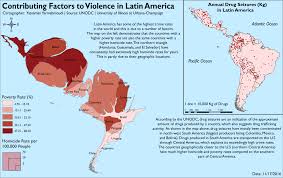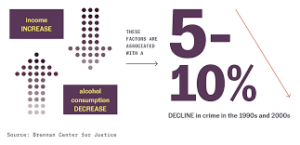Introduction

Crime statistics are vital tools for understanding the prevalence and patterns of criminal activity within a society. Governments, law enforcement agencies, researchers, and policymakers rely on these statistics to formulate effective crime prevention strategies, allocate resources, and assess the effectiveness of existing policies. However, the reliability and validity of crime statistics can vary depending on the sources from which they are derived. This paper aims to evaluate the strengths and weaknesses of different crime statistics sources, including official government data, victimization surveys, and self-report studies.
Official Government Data
Official government data, typically collected by law enforcement agencies and compiled into reports, are one of the primary sources of crime statistics. These data provide insights into reported crimes, arrests, and convictions within a given jurisdiction. One of the strengths of official government data is its comprehensiveness, as it covers a wide range of criminal offenses and is collected systematically over time. Additionally, government data often include demographic information about offenders and victims, allowing for the analysis of crime trends among different population groups.
Dark figure
However, official government data also have several weaknesses that must be considered. One limitation is the reliance on reported crimes, which may underestimate the true extent of criminal activity due to factors such as underreporting, police discretion, and the “dark figure” of crime—crimes that go unreported or undetected. Furthermore, the quality of official government data can vary depending on the accuracy and consistency of reporting practices across different law enforcement agencies. Biases in policing practices, such as racial profiling or disparities in resource allocation, can also affect the validity of these statistics.
Victimization Surveys
Victimization surveys, such as the National Crime Victimization Survey (NCVS) in the United States, provide an alternative source of crime statistics by directly surveying individuals about their experiences with crime. These surveys ask respondents about crimes they have experienced, regardless of whether they were reported to the police. Victimization surveys can capture a broader range of criminal activity than official government data, including crimes that do not result in police involvement or arrests.
Limitation of official crime

One of the key strengths of victimization surveys is their ability to overcome the limitations of official crime data by capturing unreported and underreported crimes. By directly surveying individuals, these surveys can provide more accurate estimates of the prevalence and nature of criminal victimization within a population. Additionally, victimization surveys can collect detailed information about the circumstances surrounding crimes, as well as demographic characteristics of both victims and offenders.
Internet access
However, victimization surveys also have limitations that must be acknowledged. One challenge is the potential for recall bias, as respondents may not accurately remember or report past experiences with crime. Additionally, certain populations, such as homeless individuals or those without stable internet access, may be underrepresented in victimization surveys, leading to sampling biases. Despite efforts to ensure the confidentiality and anonymity of respondents, some individuals may still be hesitant to disclose sensitive information about their experiences with crime.
Self-Report Studies
Self-report studies involve asking individuals to disclose their involvement in criminal behavior, regardless of whether they have been caught or punished for their actions. These studies typically use anonymous questionnaires or interviews to gather information about a wide range of illegal activities, from minor offenses to serious crimes. Self-report studies are often used to study juvenile delinquency and other forms of antisocial behavior.
Criminal behavior
One of the strengths of self-report studies is their ability to capture criminal behavior that may not be detected by official government data or victimization surveys. By allowing individuals to self-disclose their involvement in illegal activities, these studies can provide insights into the prevalence of delinquency and the factors that contribute to criminal behavior. Additionally, self-report studies can be conducted with diverse populations, including juveniles, adults, and incarcerated individuals.
Legal consequences

However, self-report studies also have limitations that must be considered when interpreting their findings. One challenge is the potential for social desirability bias, as respondents may be reluctant to admit to engaging in illegal behavior due to fear of judgment or legal consequences. Additionally, the validity of self-report data relies on the honesty and accuracy of respondents, which can be influenced by factors such as memory recall, perception of the survey’s purpose, and willingness to disclose sensitive information.
Authority and Legitimacy
Official crime reports are compiled and released by law enforcement agencies, lending them an air of authority and legitimacy.
Comprehensive Coverage
These reports cover a wide range of crimes, including both reported and investigated offenses.
Longitudinal Analysis
They allow for longitudinal analysis, enabling researchers to track crime trends over time and assess the effectiveness of law enforcement policies.
Weaknesses:
Underreporting
Official crime reports often suffer from underreporting, as not all crimes are reported to the police due to various factors, including fear of reprisal, distrust of law enforcement, or the perception that the crime is too minor.
Police Bias
Law enforcement agencies may exhibit bias in reporting crimes, potentially underreporting or misclassifying certain offenses to maintain favorable crime statistics.
Data Manipulation
There have been instances of data manipulation or manipulation of crime statistics by law enforcement agencies for political or administrative reasons, undermining the accuracy and reliability of the data.
Victimization Surveys Strengths:
Comprehensive Coverage
Victimization surveys capture a broader range of crimes, including those not reported to law enforcement, providing a more comprehensive picture of crime prevalence.
Anonymity and Confidentiality
Surveys offer respondents anonymity and confidentiality, encouraging more honest and accurate reporting of crimes.
Insight into Dark Figure of Crime
By capturing unreported crimes, victimization surveys shed light on the “dark figure” of crime, revealing the extent of underreporting in official crime statisti
Sampling Bias
Surveys may suffer from sampling bias, as certain demographics, such as marginalized or vulnerable populations, may be underrepresented or less likely to participate.
Memory Recall Errors
Respondents may have difficulty accurately recalling past victimization experiences, leading to memory recall errors and inaccuracies in the data.
Limited Scop
Victim surveys typically focus on specific types of crimes or demographics, limiting their scope and applicability to certain contexts.
Self-Report Studies Strengths:
Insight into Offender Behavior
Self-report studies provide valuable insights into offender behavior by allowing individuals to disclose their involvement in criminal activities anonymously.
In-depth Analysis
Researchers can conduct in-depth analyses of various factors associated with criminal behavior, such as demographics, motivations, and situational factors.
Validity Checks
Researchers can cross-validate self-reported data with other sources, such as official crime records or victimization surveys, to enhance the validity and reliability of the findings.
Social Desirability Bias
Respondents may underreport or omit sensitive or socially undesirable behaviors to avoid stigma or legal consequences, leading to biased results.
Sample Representation

Self-report studies often rely on convenience samples, which may not be representative of the broader population, potentially limiting the generalizability of the findings.
Validity Concerns
There are concerns regarding the validity of self-reported data, as individuals may provide inaccurate or exaggerated responses due to memory recall errors, cognitive biases, or other factors.
Crime statistics play a crucial role in informing policy decisions, allocating resources, and assessing the effectiveness of crime prevention efforts. However, it’s essential to recognize the strengths and weaknesses of different crime statistics sources to interpret the data accurately and make informed decisions. Official crime reports provide valuable insights into reported crimes but may suffer from underreporting and police bias. Victimization surveys offer a broader perspective by capturing unreported crimes but may be subject to sampling bias and memory recall errors. Self-report studies provide insights into offender behavior but are susceptible to social desirability bias and validity concerns. By considering these factors, researchers and policymakers can better navigate the complexities of crime statistics and develop more effective strategies to address crime and promote public safety.
Conclusion
In conclusion, crime statistics play a crucial role in understanding the dynamics of criminal activity and informing efforts to prevent and respond to crime. Different sources of crime statistics, including official government data, victimization surveys, and self-report studies, offer unique strengths and weaknesses that must be carefully considered when interpreting their findings. By recognizing the limitations of each source and triangulating data from multiple sources, researchers and policymakers can obtain a more comprehensive understanding of crime trends and develop more effective strategies for promoting public safety and justice.


